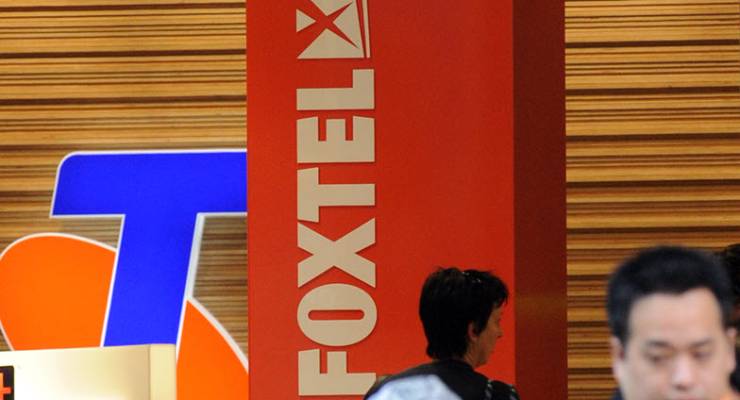
Will News Corp impair or write down the value of its 65% holding in Foxtel when the company releases its June quarter and 2018-19 results early Friday morning? The big questions won’t be about News Corp’s papers, book publishing or real estate listings; it will be the current value and future performance of its struggling pay TV operator.
News’ March quarter filing with the US Securities and Exchange Commission warned that of US$2.3 billion in assets at risk of being impaired, US$2.1 billion was in “Subscription Video Services”. The remainder involved assets in the struggling news and information business, which includes newspapers in Australia, the US and UK.
Impairment of assets is tested regularly by companies. Those tests include further growth in revenue and profits from advertising and subscriptions and the level of interest rates. Values are assigned, such as discount rates and terminal growth rates. It all depends upon the amount of cash these businesses can generate. In all cases it is the future growth prospects that are the key to the difference between impairment and the status quo in terms of asset values.
So analysts are wondering if a July interview with Foxtel CEO Patrick Delaney in the The Sydney Morning Herald revealed what will happen. In the interview, Delaney was quoted as saying the key to Foxtel’s strategy was to “strengthen and maintain” the company, but that “the word growth is not in there”.
“What are we doing about it? We’re trying to keep customers and keep the the most valuable ones, the big ones, engaged.”
Foxtel has in effect circled the wagons, done a deal with one of the besiegers in Netflix and is now hoping that its Foxtel Now streaming service and Kayo sports streaming operation can keep the hordes at bay. But to do so will mean giving up revenues and seeing “churn” continue at wasteful levels above 12-14% (that’s the replacement of existing customers which Foxtel is trying to do by cutting prices to keep people who threaten to leave).
Average revenue per user (or ARPU) is the most important measure in a subscription business — it is falling at Foxtel and will continue to do so with the new streaming services when compared to revenues generated from broadcast (household) services. Foxtel lost more than 200,000 household subscribers from 2017 to the end of 2018 and is reported to have lost more than 100,000 in the June half year alone.
These subscriber numbers will be one of quite a few red flags in the News Corp 208-19 figures. We can depend on News to try and spin the performance and deflect attention. For example subscriber numbers for Foxtel Now and Kayo will be given to the nearest possible date of the filing — say August 7 — while other subscriber data will be provided for the year and quarter to June 30 (that is what we saw in the March quarter report).
Keep in mind that the pay TV company had a pro forma loss of A$297 million in the six months to December, up from the full year pro forma loss of A$184 million for 2017-18. This is on top of questions about whether News Corp has been forced to bail Foxtel out again by lending it more money top of the A$300 million advanced to repay a US$211 million debt in April. In the next year Foxtel has another US$426 million (around A$620 million).
How much is Foxtel’s total debt? News Corp and Foxtel have been trying to refinance for more than eight months without success and have been forced to make individual repayments as the banks won’t advance the money. Without News Corp’s bailout in April, Foxtel would be on life support.








Do shareholders – and democracy – a favour – pull the plug.
Foxtail struggling trouble refinancing debt. Oh that’s such good news. The sooner the NewsCrap organisation start scraping the maggots off the Foxtail carcass the better. These people can then also go on Centrelink newstart and become job snobs.
Oh no rumour has Scumbag Morrison and his mates are contemplating gifting a large a out of tax payer monies to NewsCrap to keep Foxtail afloat. It is a well known fact in the MSM some turds can still float. It only needs a sympathetic gummint to gift $$$$.
I have no experience with these products and hope I never will. But I wonder if the geniuses who run these companies understand just how toxic the brands of Fox and News Limited are to so many people. Perhaps if they had focused on genuinely “fair and balanced ” news as well as entertainment, they might have built a greater customer base to survive the changes to come. It’s too late now. The damage has been done. To add to that, I know 2 or 3 people who are totally apolitical and subscribed to Foxtel because they liked sport or some such reason. Without exception they dropped their subscription because of the ads and because they were not getting what they paid for and because of the money grubbing, arrogant, attitude of the company.
The sooner these redneck media organisations go broke the better, their media is not informative, they are simply propagander arms of the extreme right and no better than the chinese,russian or nazi germany`s propagander organisations, the Jones, Bolts, Hadleys, Price`s etc are the lord haw haws and tokio rose`s of the 21st century whose only purpose in life is to brainwash and seduce the masses into accepting a modern fuedal system to perpetuate the incomes of the greedy rich and starve the poor ,and judging by recent election results its working ,as the dumb and dumber of society swallow their verbal poison gleefully.